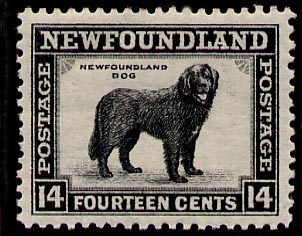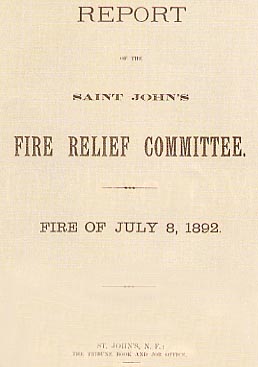
History

 |
Newfoundland History |
 |
Newfoundland History
Set-Backs in Newfoundland: the St. John's Fire (1892) and the Bank Failure (1894)
[This text was published in 1950. For the full citation, see the end of the text. The image and the links have been added to the original document by Claude Bélanger.]

The period 1892-1894 was a calamitous one for Newfoundland . In February, 1892, a violent storm caused heavy loss of life and great distress. In July of the same year St. John's was devastated by a great fire. Twice before the city had been swept by fire, but the conflagration of 1892 far exceeded the earlier ones in its suddenness and damage. In less than 24 hours three-quarters of the city was reduced to ruins and nearly 11,000 people were rendered homeless. Many of the large public buildings and churches were destroyed. Property damage was estimated at $20,000,000.
Two years later, while the Island was still recovering from this disaster, it was threatened with financial collapse. In December, 1894, one of the three banks at St. John's was forced to close, leading to a run on the other two, both of which had to refuse payment. Business came to a standstill and the resulting dismissal of workmen led to bread riots. The situation was all the more serious because one of the banks, acting as the financial agent of the Newfoundland Government, was obligated to pay the half-yearly interest on the public debt on Jan. 1, 1895. Consequently the bank crash gravely impaired the public credit.
The Newfoundland Government appealed for aid to Great Britain, but felt unable to accept it on the conditions offered, which implied the possible application of financial control by the Imperial authorities. The Newfoundland Government decided instead to investigate the possibility of reopening talks on Confederation, which had been undertaken without success eight years previously by Canadian and Newfoundland leaders. The British Government in the meantime made an immediate grant for relief purposes.
Source: GOVERNMENT OF CANADA , Newfoundland . An Introduction to Canada's New Province, Published by authority of the Right Honourable C. D. HOWE, Minister of Trade and Commerce, prepared by the Department of External Affairs, in collaboration with the Dominion Bureau of Statistics, Ottawa, 1950, 142p., pp. 15-41.
© 2004 Claude Bélanger, Marianopolis College |